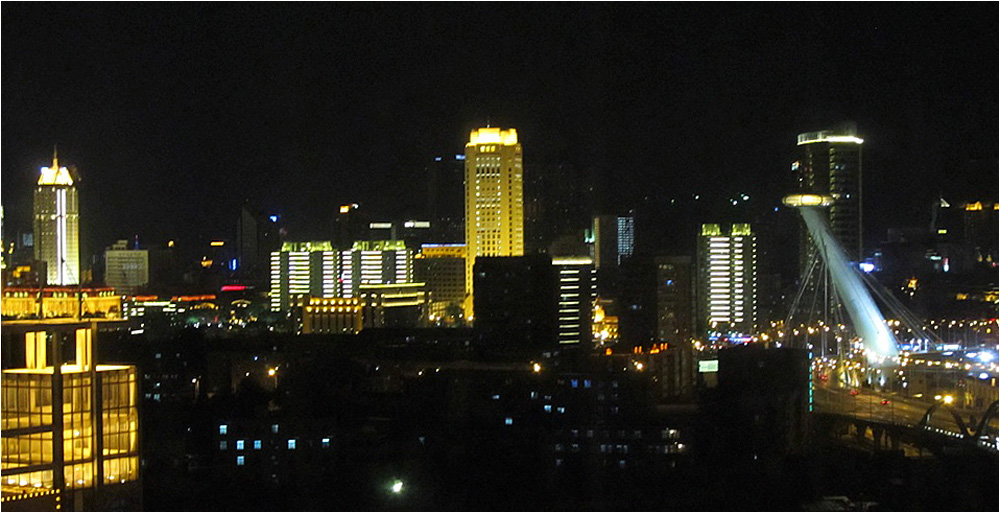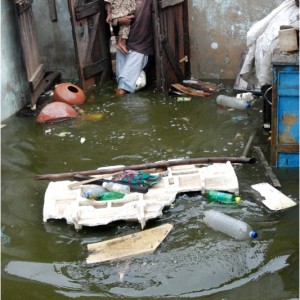Why Gas Leaks Matter in the Hydraulic Fracturing Debate
By Abrahm Lustgarten
ProPublica
Last week’s article about a hydraulic fracturing clause that was included in the Senate’s drilling accountability bill sparked a lively debate on ProPublica’s website about why methane contamination from drilling is relevant to a discussion of environmental risks of fracturing. In response:
Methane migration is a critical part of the discussions of underground contamination risks from drilling and hydraulic fracturing because it demonstrates that a pathway exists for contaminants to move through the substrata to the surface or into water supplies. In many of the cases described in ProPublica’s articles, methane — which was proved to be thermogenic and not from biological decay — is believed to have moved from thousands of feet underground, or travelled several miles laterally, sometimes from the same layer of gas being exploited for energy.
Fracturing consists of injecting water and (usually secret) concoctions of chemicals deep underground, where it fractures the rock and releases the natural gas deposits. One of the most influential explanations why fracturing presents no risk hinges on the assertion that the deep isolation and many layers of rock and earth effectively seal off the fracture zone from the surface — that it is impossible for chemicals, water, gas or anything else to move from thousands of feet below into shallow aquifers.
But the consistent and widespread detection of methane migration from unnatural causes — in places including Colorado, Wyoming, Pennsylvania, Ohio and New York — shows that it is not impossible, that in fact there are underground pathways for such movement. And if methane can move, it’s an indicator of other substances’ ability to migrate as well.
Many of the methane migration cases have been traced to flaws in the cementing and casing of the wells, as many of our articles have explicitly explained. Research shows that others may have migrated directly through underground faults and fissures.
Scientists we ask about these issues consistently make two points:
1. The pressure of hydraulic fracturing inside a well structure exerts great force that can exploit cementing problems. In other words, a crack in the cement or casing might be fine until the pressure of hydraulic fracturing forces substances through it.
2. It doesn’t matter whether contaminants reach aquifers through a spider web of geologic cracks created by hydraulic fracturing, or in the spaces alongside the well bore that was pushed through the earth. Contaminants are reaching water supplies as a result of the processes and pressures being exerted underground.
The question of whether hydraulic fracturing is responsible for this contamination, and whether it is causing other contamination, remains unanswered. Neither our articles, nor anyone we have spoken with, has claimed to have reached a conclusion on that point. That is why the Environmental Protection Agency conducting two simultaneous studies of these issues — one in Pinedale, Wyo., which will attempt to assess a specific pattern of contamination there, and another broad national study meant to evaluate the potential risks of fracturing. These are the first studies we are aware of that have engaged a scientific process to study these issues.
Two things are clear now, however:
1. Hydraulic fracturing is the only aspect of the complicated drilling process where basic standards for safe operations are not set by the federal government.
2. If fracturing were regulated, for instance, under the Safe Drinking Water Act — the federal law that regulates every other type of underground chemical injection — the law would likely require the sort of well integrity tests and localized pre-drilling geologic analysis to ensure that underground faults and fractures could not reach water supplies. It would also likely require that well casing and cementing be solid enough to withstand the pressures exerted by the fracturing process, and thus prevent the well from leaking methane, or chemicals, or anything else.
This report comes to Circle of Blue from ProPublica, an independent, non-profit newsroom based in Manhattan that produces investigative journalism in the public interest.

Circle of Blue provides relevant, reliable, and actionable on-the-ground information about the world’s resource crises.







Leave a Reply
Want to join the discussion?Feel free to contribute!